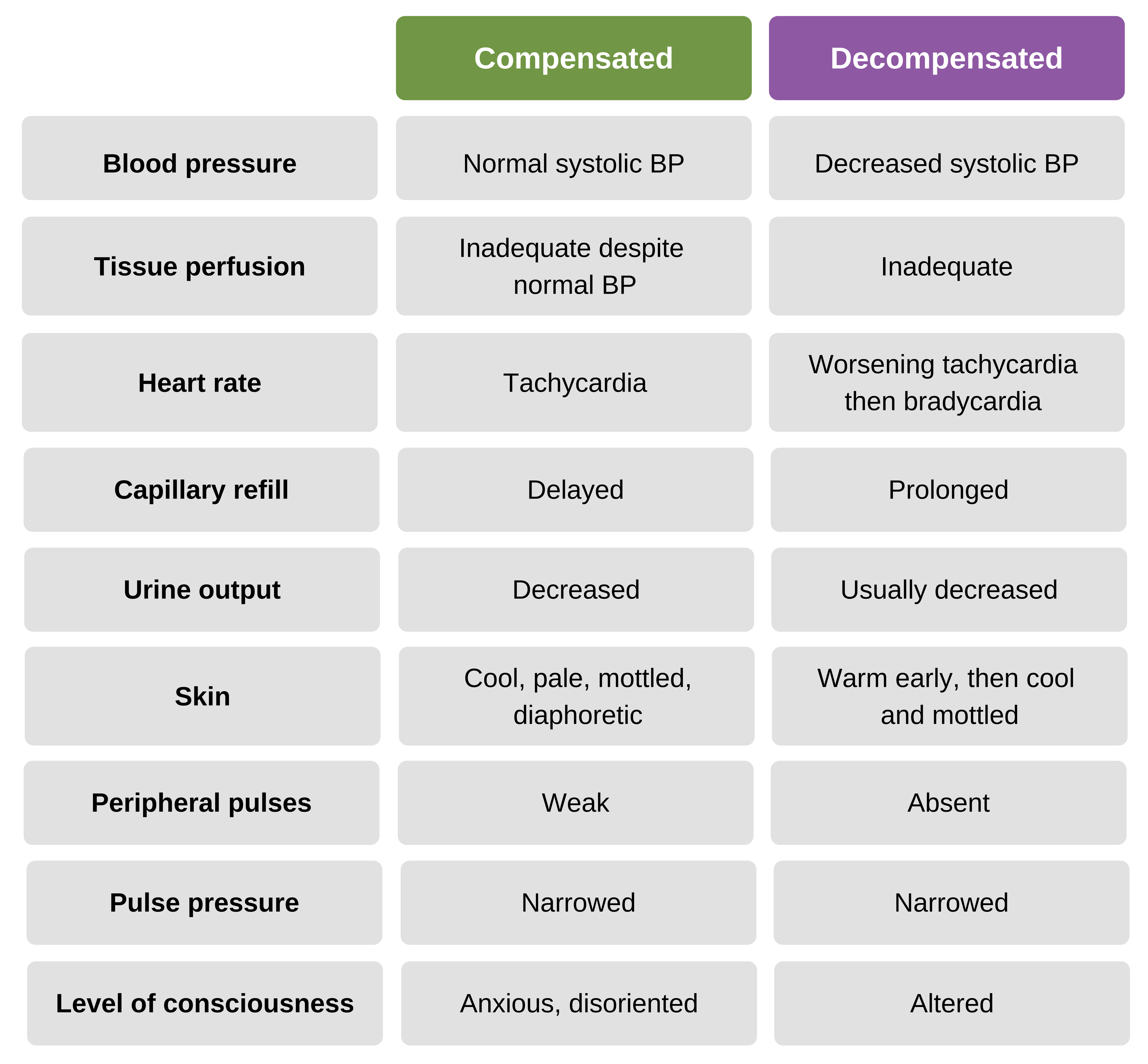Categories of Shock by Effect on Blood Pressure
Shock can be categorized based on the effect on systolic blood pressure. In compensated shock, a normal systolic blood pressure is maintained. In decompensated shock, the body’s compensatory mechanisms fail. The child becomes hypotensive and can no longer maintain a normal systolic blood pressure.
Key Takeaway
Calculate normal systolic blood pressure in children 1 to 10 years old using this formula:
If the actual systolic blood pressure is lower than the calculated pressure, the child is hypotensive.
A fundamental aspect of shock that providers must keep in mind is that blood pressure can be normal or even slightly elevated in the presence of shock. The body will initiate compensatory measures such as increasing the heart rate and SVR to maintain adequate cardiac output.
A child struggling to maintain cardiac output and a normal systolic blood pressure may have worse end-organ damage because of severely increased SVR compared to a child with hypotensive shock due to decreased cardiac output and SVR.
When measuring blood pressure in the setting of shock, the PALS provider must assess and reassess the peripheral pulses. When SVR is significantly increased, blood flow through the peripheral circulation will be compromised. Therefore, blood pressure measurement in the periphery may be unreliable. If the blood pressure measurement is uncertain, the clinician must treat the shock based on a clinical evaluation of tissue perfusion.
Compensated vs. Decompensated Shock

Compensated vs Decompensated Shock
Shock is an accelerating process where the progression of compensated shock to decompensated shock can take hours, but the subsequent deterioration into cardiac arrest can happen within minutes. It is best to intervene immediately to prevent this progression because its outcomes are poor.